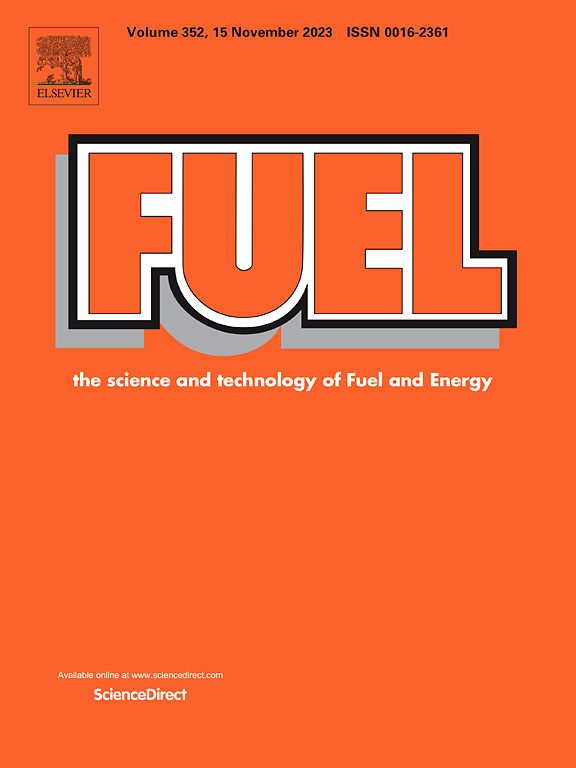Green hydrogen production and potential evaluation via chemical looping reforming of pyrolytic volatiles from reed
IF 7.5
1区 工程技术
Q2 ENERGY & FUELS
引用次数: 0
Abstract
To achieve efficient utilization of waste resources and promote energy transition, this study selected reed, reed leaves and reed stems as raw materials and utilized pyrolysis series chemical looping reforming (CLR) technology to produce green hydrogen. The optimal pyrolysis conditions (pyrolysis raw materials, temperature) and the feasible region of products were explored. The result shows that the optimal pyrolysis raw material is the mixed reed, with a temperature of 600 ℃ (volatiles content of 76.29 % and hydrogen production of 1.73 mg·greed−1). NiFe2O4 oxygen carrier (OC) was used to explore the optimal operating conditions (temperature, OC dosage and steam addition amounts) for the pyrolysis and volatiles series CLR of reed. This study demonstrates that the volatiles conversion reached 95.83 % at 700 ℃ with a steam input of 0.6 ml, achieving a maximum hydrogen yield of 47.7 mg·greed−1. In-situ diffuse reflection infrared spectroscopy and thermogravimetric infrared analysis revealed that the dissociation of methane and the further conversion of ketone products might be the rate-limiting steps of the reaction. Furthermore, this study counted and speculated the possibility of hydrogen production from reed in the world. This study provides essential data support for the green and low-carbon hydrogen production from waste resources.
芦苇热解挥发物化学环重整绿色制氢及潜力评价
为实现废弃物资源的高效利用,促进能源转型,本研究选择芦苇、芦苇叶和芦苇茎为原料,利用热解系列化学环重整(CLR)技术生产绿色氢气。探索了最佳热解条件(热解原料、温度)和产物的可行区域。结果表明,混合芦苇为最佳热解原料,热解温度为600℃(挥发物含量76.29%,产氢量1.73 mg·greed−1)。采用NiFe2O4氧载体(OC)对芦苇热解及挥发分系列CLR的最佳操作条件(温度、OC用量和蒸汽添加量)进行了探索。研究表明,在700℃、0.6 ml的蒸汽输入下,挥发物转化率可达95.83%,氢气产率最高可达47.7 mg·greed−1。原位漫反射红外光谱和热重红外分析表明,甲烷的解离和酮类产物的进一步转化可能是该反应的限速步骤。此外,本研究还对世界上芦苇制氢的可能性进行了统计和推测。本研究为废弃物资源化绿色低碳制氢提供了必要的数据支持。
本文章由计算机程序翻译,如有差异,请以英文原文为准。
求助全文
约1分钟内获得全文
求助全文
来源期刊

Fuel
工程技术-工程:化工
CiteScore
12.80
自引率
20.30%
发文量
3506
审稿时长
64 days
期刊介绍:
The exploration of energy sources remains a critical matter of study. For the past nine decades, fuel has consistently held the forefront in primary research efforts within the field of energy science. This area of investigation encompasses a wide range of subjects, with a particular emphasis on emerging concerns like environmental factors and pollution.
 求助内容:
求助内容: 应助结果提醒方式:
应助结果提醒方式:


